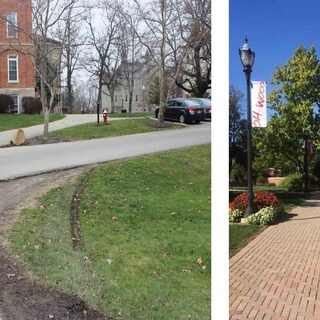Tradeline's industry reports are a must-read resource for those involved in facilities planning and management. Reports include management case studies, current and in-depth project profiles, and editorials on the latest facilities management issues.
Latest Reports
From Steel to Software: Repurposing an Industrial Building for Education
Universities typically build or acquire new academic space sparingly, after long deliberation. When changing economic conditions dropped a whole campus into Lehigh University’s lap, the challenge has been to use that space in ways that support today’s education. Industrial giant Bethlehem Steel didn’t go formally bankrupt until 2001, but the writing was on the wall as early as 1987, when the company sold the majority of its “Mountaintop” research facility to Lehigh, which has since acquired two more buildings there, including Mountaintop C. That massive building’s three high bays attached to a curved bank of offices, is now home to student-driven projects in an environment that seeks to keep elements of the industrial feel and keep large bays as relatively rough, unfinished space.
Boosting Your Institution’s Curb Appeal
Higher education facilities executives are rightly focused on the needs of students, faculty, and administrators, but what about prospective students and their parents? Targeting facility and campus improvements to boost the campus tour experience has a positive impact on recruitment, enrollment, and retention. A formal evaluation process—resulting in a detailed scorecard and a set of recommendations presented in the form of a prioritization matrix—might enhance the all-important first impressions and intangibles that are impossible to quantify.
University of Toronto Renovates 570 Aging Labs in Less Than Two Years
The University of Toronto spent $153 million (USD) to rehabilitate 47 percent of its total research space, a move that is favored by the Canadian government as a viable alternative to building new facilities. It is estimated that constructing new buildings to replace this amount of the university’s aging research facilities would have cost approximately $494 million.
University Fits Renovations Into its Master Plan
At the University of Minnesota, a renovation/construction project to add science space required detailed integration with the campus district plan, as well as preservation of historic features. The result was enhanced physical connectivity on campus, a careful blending of older and new construction, and improved energy performance. Tate Hall is one of 260 structures on the main Twin Cities campus, which is so large that planners have divided it into districts for planning purposes. The urban campus straddles the Mississippi River, and Tate, a horseshoe-shaped building first constructed in 1926, sat largely empty, as most of the physics department had recently moved to a new research building.
Innovation Hubs and Incubators Drive Academic Research to Commercialization
Innovation hubs and incubators are emerging as the best solution to help universities, entrepreneurs, researchers, and students transform their creative ideas into viable commercial ventures. Users want facilities that focus on entrepreneurship, creativity, and innovation; foster interdisciplinary collaboration and partnerships; offer responsive and flexible spaces; create a spirit of ground-up innovation; support commercialization of ideas/products; and connect to nearby universities, companies, and amenities.





